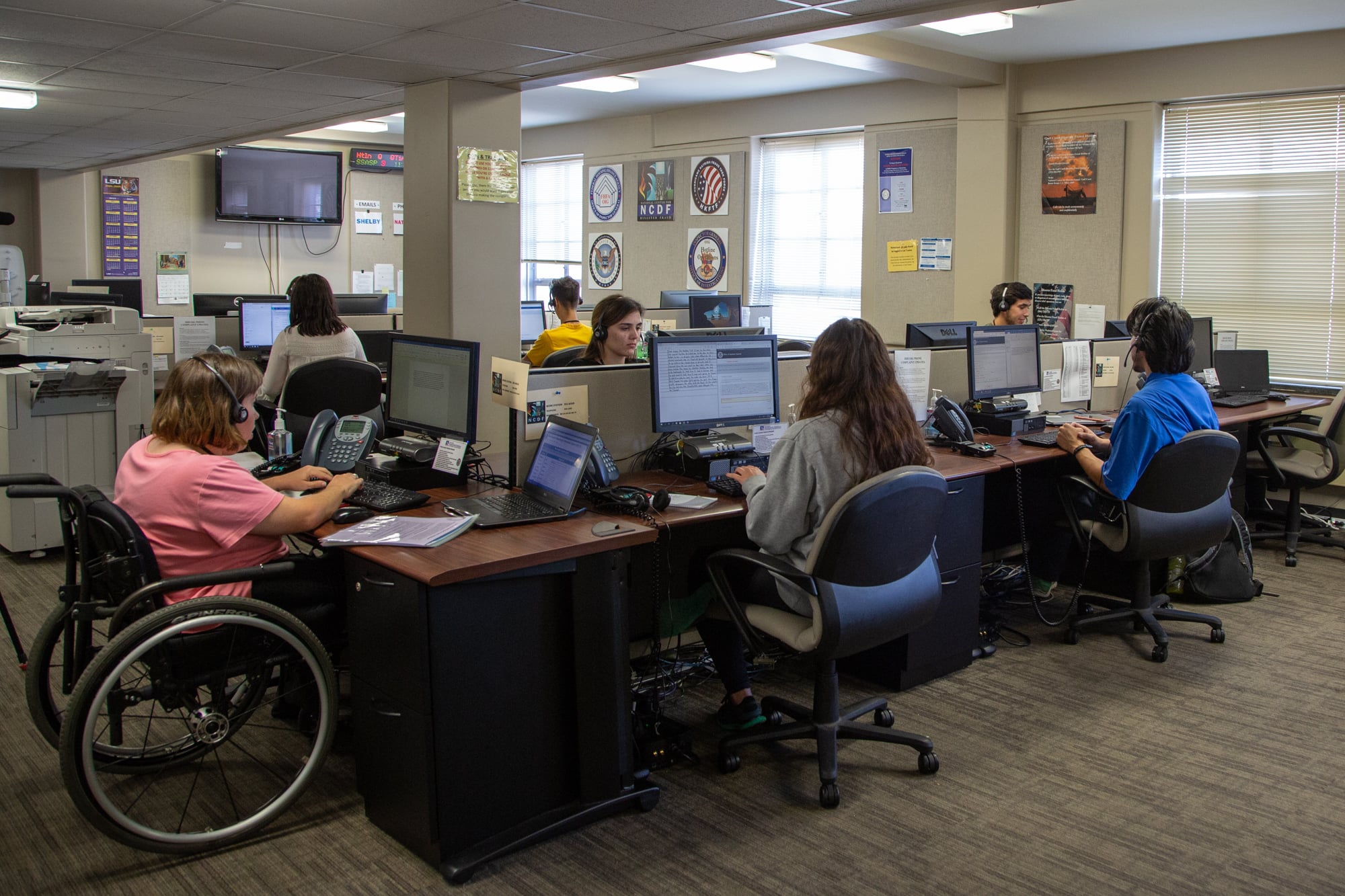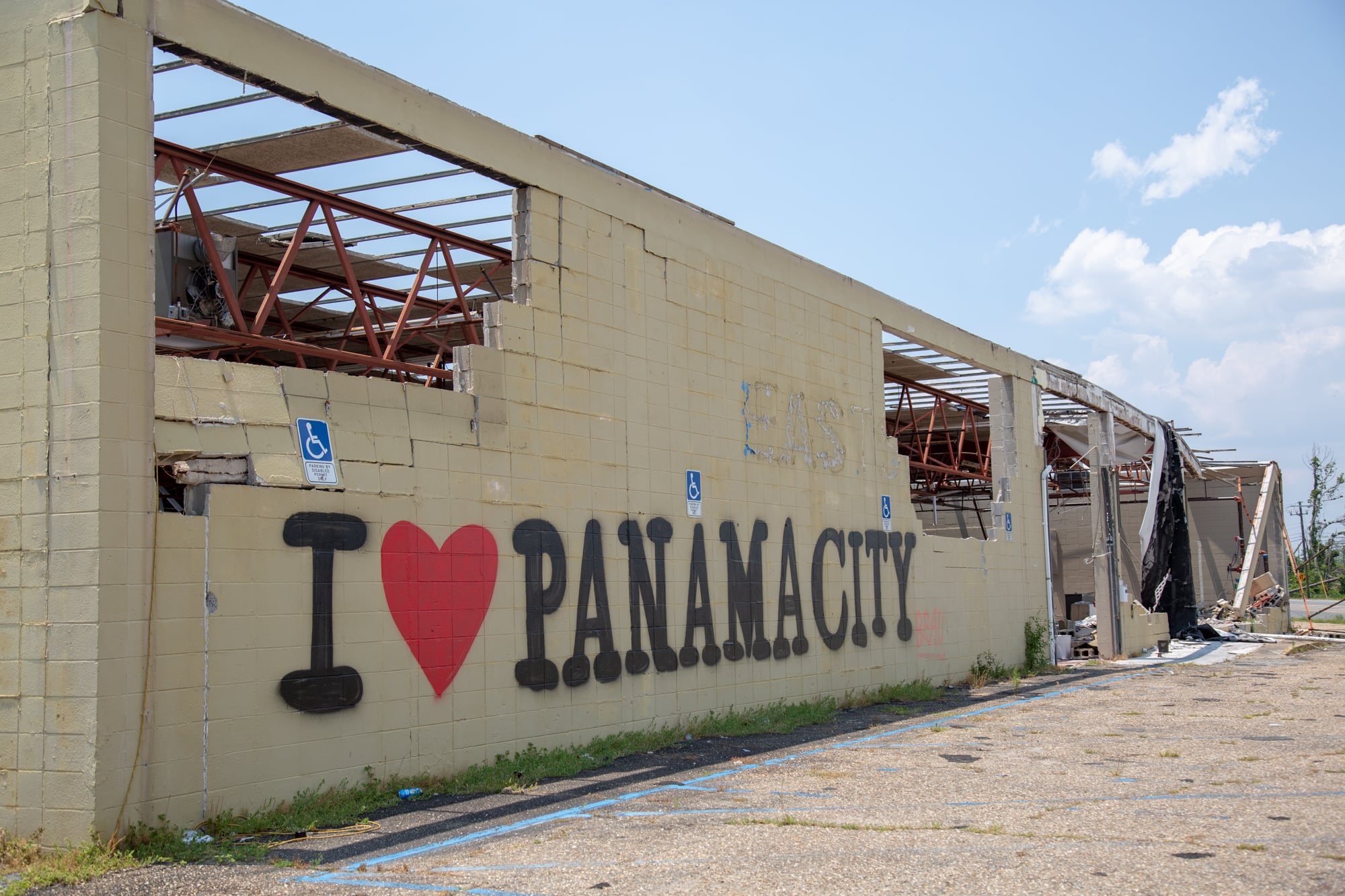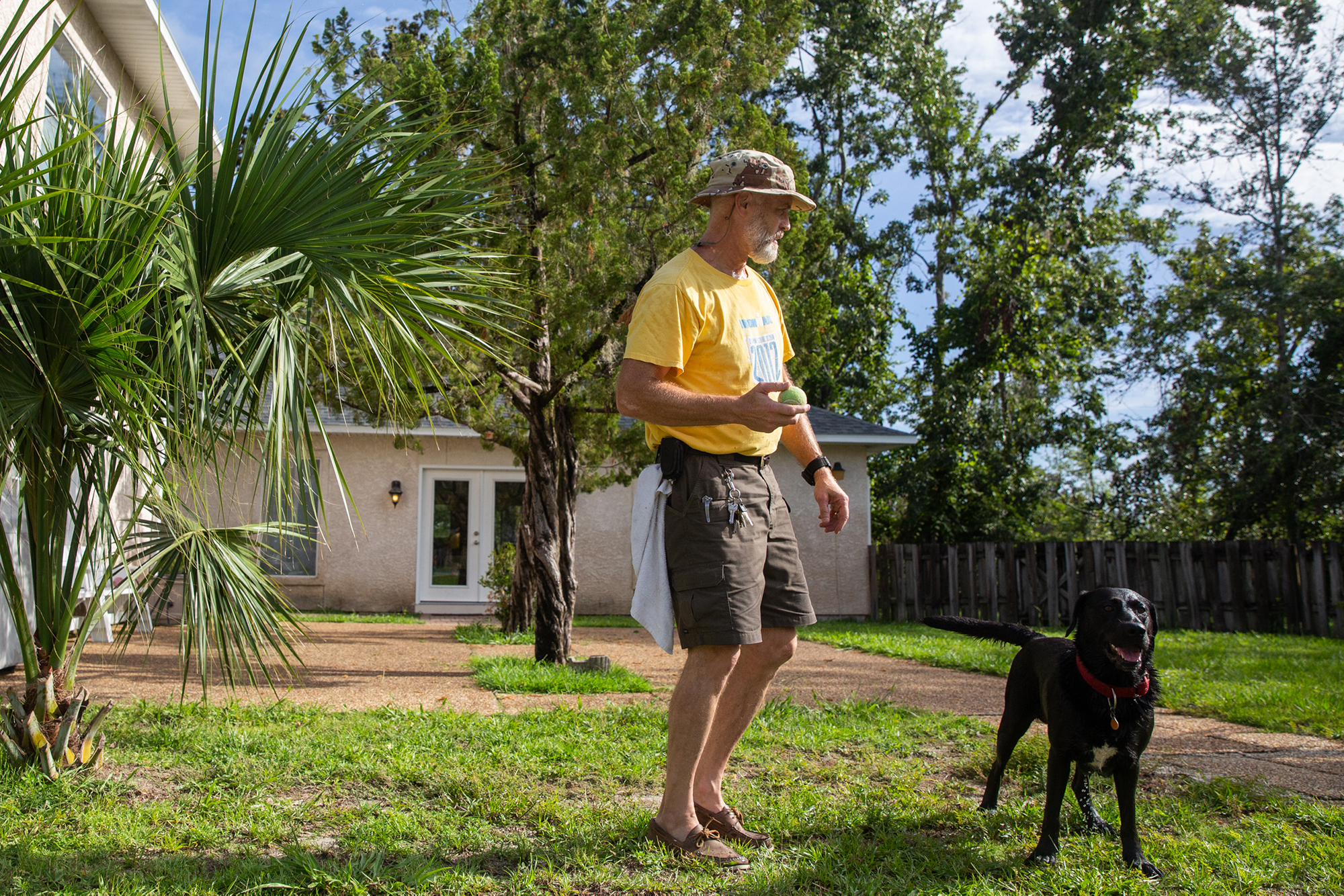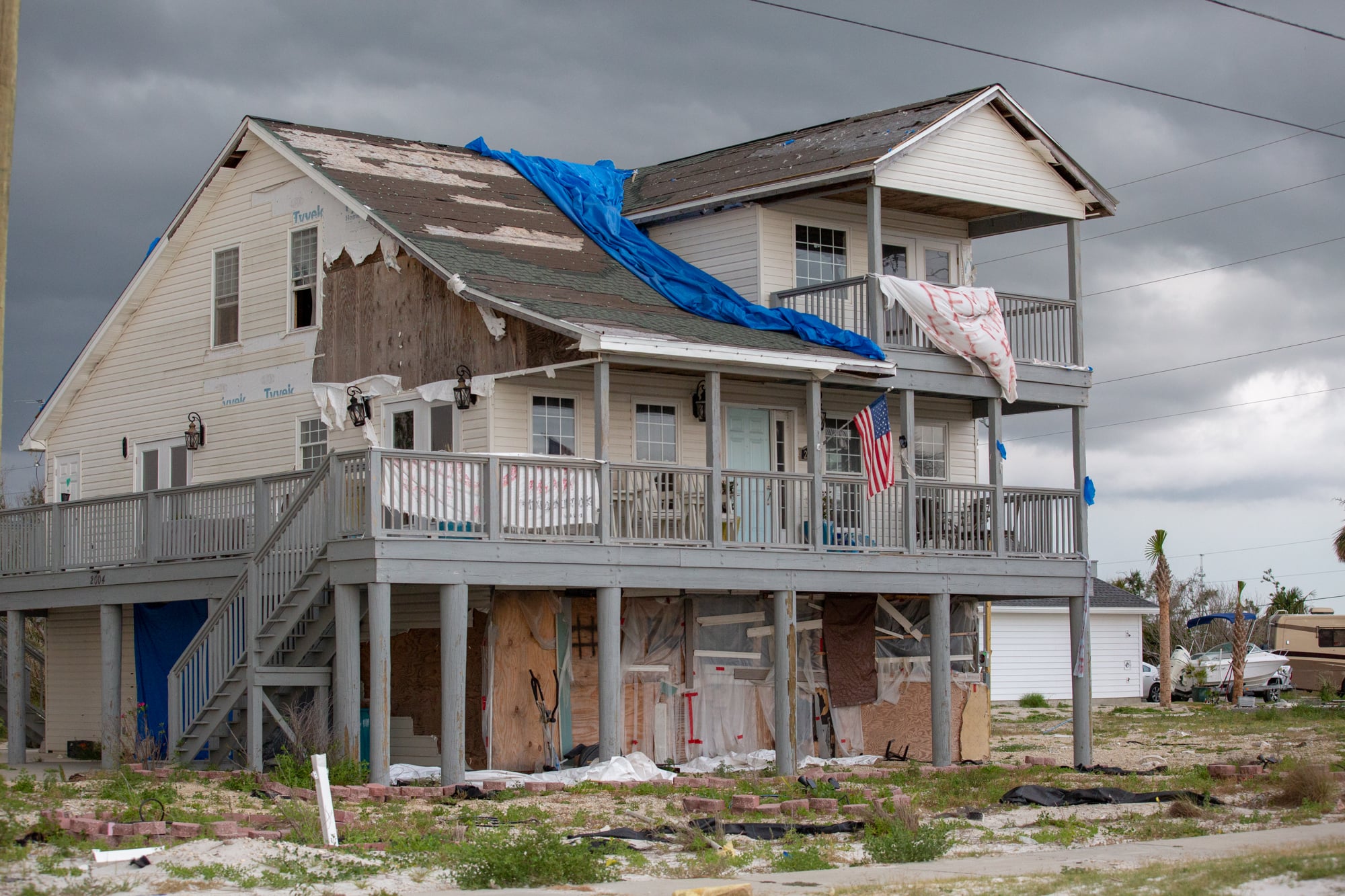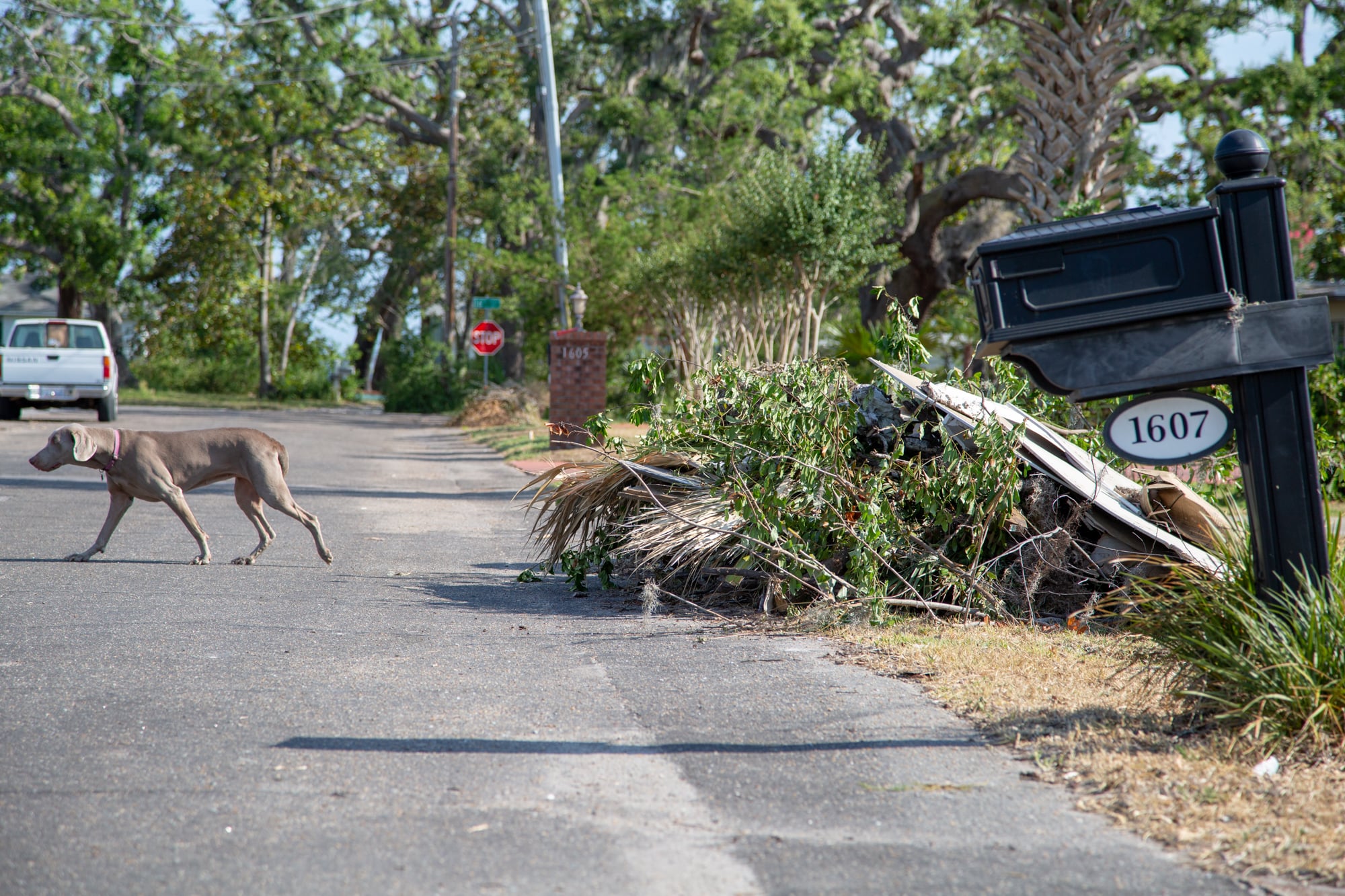‘Fraud follows the money’: Identity theft, price gouging and fake insurance claims plague disaster relief efforts
PANAMA CITY, Fla. – As the scale and frequency of major disasters escalate, millions of dollars in federal, state and insurance payments intended for recovery efforts are being stolen by fraudsters taking advantage of chaos and the pipeline of aid flowing into the stricken areas.
Last year, Olanrewajua A. Beyioku, also known as “Papa Smith Morgan,” was charged with wire fraud after allegedly devising a scheme to defraud the American Red Cross. The Gary, Indiana, resident used reference codes intended for nine households affected by Hurricane Harvey to obtain $3,600 in relief funds.
Beyioku was one of 3,300 identified cases of fraudulently collecting reference codes that resulted in a loss of more than $1.3 million to the Red Cross.
After Gulf Coast flooding in 2016, Renata Foreman of Independence, Louisiana, submitted false claims from multiple locations and made more than 50 fraudulent applications using stolen identities to obtain Disaster Unemployment Assistance funds from the Louisiana Workforce Commission. In March, Foreman, 39, was sentenced to 111 months in federal prison, and five years of supervised release for multiple counts of wire fraud and aggravated identity theft.
In West Virginia, one woman embezzled more than $18,000 in Federal Emergency Management Agency benefits for the June 2016 flood in Clay County. Pamela Taylor, 57, falsely claimed her primary residence was damaged from the flood when it was not. She has paid $18,000 in restitution and was sentenced in May to 10 months in prison, two months of home confinement and a $10,000 fine.
“As you can imagine, fraud follows the money,” said U.S. Attorney Brandon Fremin, the executive director of the National Center for Disaster Fraud. “So when HUD (Housing and Urban Development) or FEMA or other federal agencies start to put money into those affected areas, that's when the bulk of the fraud seems to follow. The fraudsters know when the money arrives. So they know that it's now time for them to operate.”
Losses to disaster fraud are estimated at 10% of disaster-related insurance payouts and FEMA spending, according to a report by the National White Collar Crime Center in West Virginia. More precise losses are difficult to quantify due to the challenges of identifying, reporting and prosecuting fraud.
“It’s next to impossible to actually determine how much fraud there is,” said Richard Brody, a certified fraud examiner and professor of accounting at the University of New Mexico.
Disaster fraud comes in the form of identity theft, price gouging and fake claims made to insurance companies and the federal government, including FEMA. Contractor, charity and insurance fraud also can be prolific during times of disaster.
In the aftermath of a disaster, fraud against FEMA is commonly committed by submitting fraudulent claim applications for disaster relief benefits, often claiming damage that did not occur. In some cases, fraudsters impersonate FEMA or other federal officials to deceive affected individuals.
“There should be a red flag there that nobody from FEMA is going to ask you for a check,” Fremin said. “That's a big red flag, and that should be a huge indicator that something is amiss.”
Months after Hurricane Michael last October, residents of Panama City say fraudulent contractors flooded the Florida Panhandle days after the storm, persuading people to sign questionable contracts that ultimately set back their recovery.
Some residents say they signed over their insurance benefits believing a contractor would do the work they were hired to do, only to find months later the job was never done or that they were charged too much.
Hurricane Michael was a Category 5 storm that swamped the northwestern tip of the Panhandle near Panama City, a town of nearly 37,000, leaving behind shattered homes and ruined pavement along U.S. 98. Hundreds of toppled trees littered adjacent Mexico Beach, where neighborhoods and homes were reduced to foundation slabs.
“Bringing the physical structures back to the way they were, people recovering, that can take years,” said Fredric Kerstein, a former Florida prosecutor. “When you’ve got two out of every three homes in your community that are destroyed, you’re not going to have enough contractors to do the work properly, and that’s part of the problem. That’s why everything is delayed. Recovery is a long process.”
On June 1, nearly eight months after Hurricane Michael, dozens of Panama City residents met at a tent structure serving as the temporary home of St. Dominic Catholic Church, which was destroyed in the storm.
Mass was not held that day. Instead, representatives from local law enforcement and insurance companies met with citizens and victims of disaster fraud. They included two locals, Ted Mahoney and Greg Dossie, who experienced drastically different outcomes.
In an interview at his home, which is still gutted, unrepaired and uninhabitable, Mahoney said he and his family are the victims of fraud.
In the hours before Michael, Mahoney waited out the storm in his house in Lynn Haven, just north of Panama City. His wife, Jennifer, and two children, Maria and Monica, left town to avoid the storm. He stayed, along with the family dog, Sadie.
Although first forecast as a tropical storm, Michael rapidly intensified two days before landfall, an unusually accelerated pace that left the Panhandle little time to prepare.
When the storm barged in about noon Oct. 10, it hit hard and fast. The Category 5 wind speeds shattered windows, destroyed the power grid and hampered communication networks across Bay County and nearby areas. Downed trees and debris blocked roads, making them inaccessible.
The storm opened Mahoney’s roof, allowing torrents of rain to pour into the house, damaging it throughout. Out in the yard, his dense trees were reduced to naked trunks and downed branches.
“We got through the storm,” Mahoney said. “We lost the shingles. The structure withstood the storm marvelously, marvelously. But because we lost the shingles, water comes in and now you have inside water damage.”
The roof has since been repaired, but inside, little else has been done, even though Mahoney said his insuror paid a contractor for repairs.
“In our situation, the contractor, unequivocally, black and white, claimed that work was done that was clearly not done,” Mahoney said, citing among other things, drywall removal that was never completed.
Mahoney pays his children 5 cents for each used nail they find on the property, left behind by the contractor who gutted their home.
“In general, people are good, honest people, the people that we interact with in this area,” Mahoney said. “So I think that the people expect, you know, if you say something, you're going to do it. So that's the expectation.”
Dennis Rozier, who leads the Bay County Sheriff’s Financial Crimes Division, said some contractors, many unlicensed, persuaded residents to sign an assignment of benefits, known as an AOB, which allows the contractors to file claims with insurance companies, make repairs and collect payments on the homeowner’s behalf.
The Bay County Sheriff’s Office, along with other state agencies, formed Citizens United Fighting Fraud, known as CUFF, a task force dedicated to catching unlicensed contractors operating after Hurricane Michael.
“I wanted to get the unlicensed contractors first,” Rozier said.
The task force has arrested several unlicensed contractors in a series of sting operations.
“As (CUFF) started making a lot of arrests and word got out, a lot of these contractors got out of town,” Rozier said. “We found it harder and harder to find them.”
Dossie, a Panama City native, is familiar with disaster recovery. As a public adjuster, Dossie helps policy holders maximize their insurance claims. But despite his expertise, his personal recovery process has been as complicated as Mahoney’s and those of other Panama City residents.
The four modest houses on his property, which is where he grew up, are uninsured. When the storm hit, the roof and side walls blew off one house. A tree crashed through another.
In the house where Dossie lives, the concrete siding cracked and water seeped in. An 80-foot tree, slightly uprooted, looms threateningly. He said the money he received from FEMA isn’t enough to restore his home or even cut down the leaning tree.
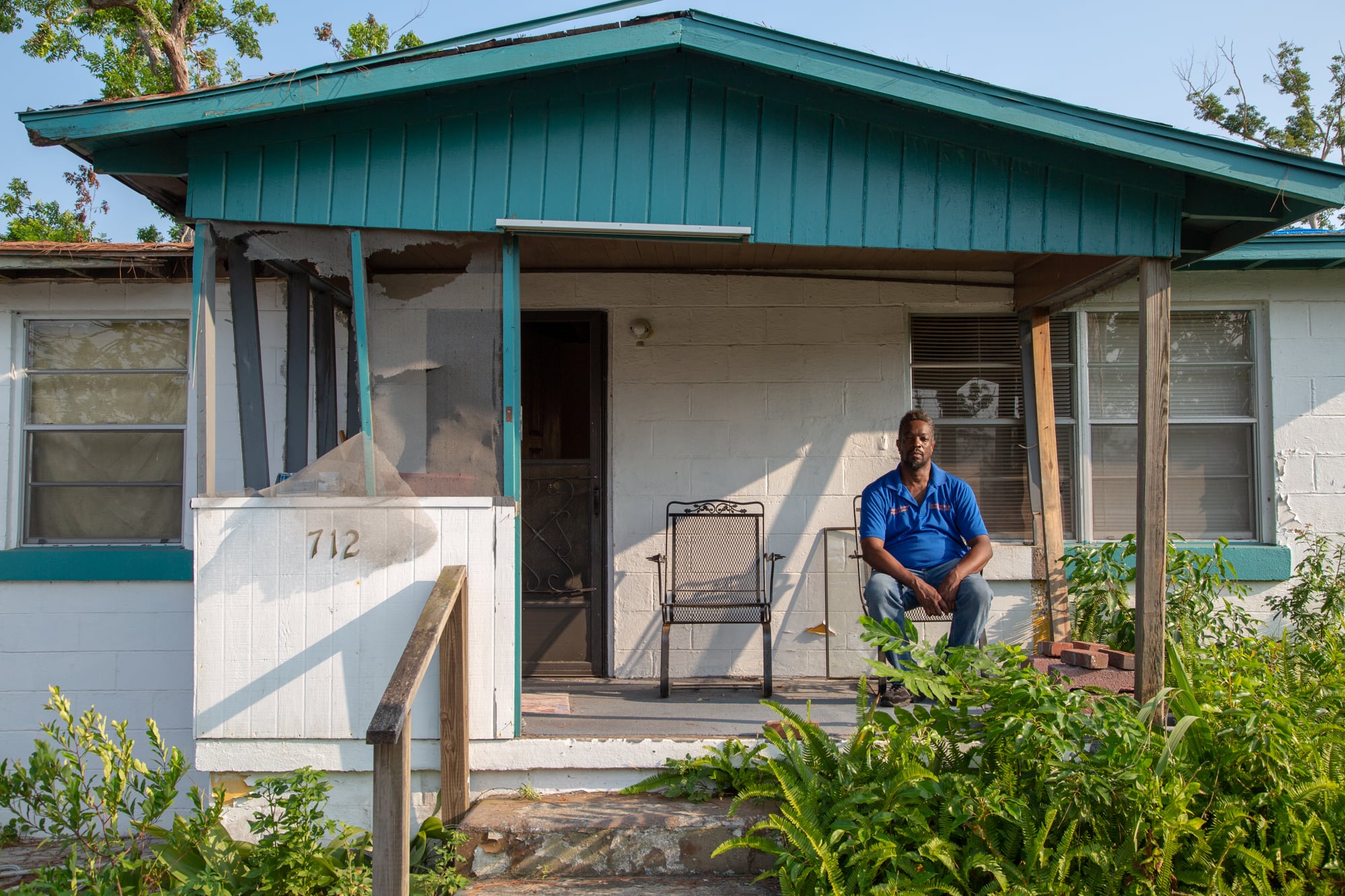
As an insurance adjuster, Greg Dossie is familiar with disaster recovery, helping policy holders with their claims. But his personal recovery process in the wake of Hurricane Michael has been difficult. Dossie still lives in his home – which was not insured – but he doesn’t know when he will be able to repair it. (Jake Goodrick/News21)
Dossie still lives in his home. He doesn’t know when he will be able to repair it, even as he spends his days adjusting claims so others can get their homes fixed.
“What I think a lot of people have learned,” Mahoney said, “is that there are folks that don't share those same ethics and they get bitten by that. Call it naivete. Call it whatever you want. They get bitten by that.”
Dossie and Mahoney said they weren’t prepared for the destruction and fraud following Hurricane Michael.
“People are thinking we’re going to be back to normal, two, three, four, five years,” Dossie said. “It’s not going to happen. There’s going to be a new normalcy. Neighborhoods are changing. Houses are being destroyed … the whole landscape is going to change.”
The lack of experience and knowledge in dealing with post-disaster fraud meant many Panhandle residents didn’t know the risks of signing over an assignment of benefits to dishonest contractors or how to deal with their insurance claims.
Many contractors either overcharged homeowners or collected down payments and vanished, leaving families stuck with a contract they couldn’t get out of.
